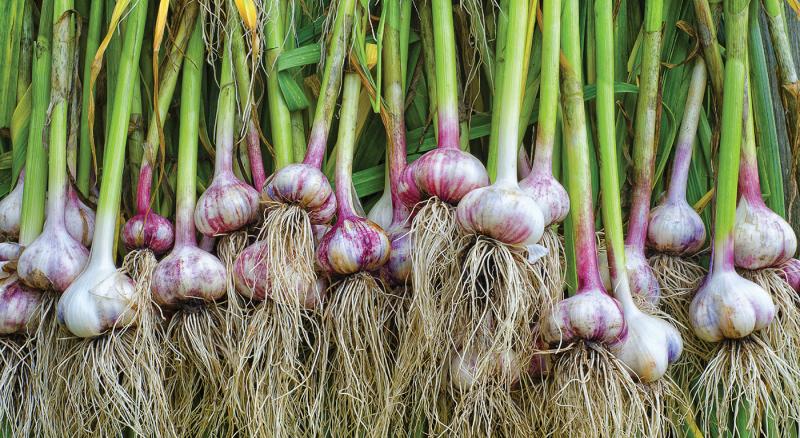Count von Count the Muppet from Sesame Street is based on real vampire myth. Count von Count suffers from arithmomania, a disorder said to afflict all vampires, where the count has a strong need to count things. So, one way to discourage vampires is to toss mustard seeds outside your door or hang fishing net outside your window. Vampires will be compelled to count the mustard seeds or the holes in the fishing net, delaying them until the sunrise when they disappear.
Besides mustard seed and fishing nets you can, of course, use garlic to discourage vampires.
Fall is the best time to plant garlic (Allium sativum), just as long as you have at least three weeks before the ground freezes, so the garlic's roots can develop before winter.
There are two types of garlic, hard neck and soft neck. Plant your hard-neck garlic in the fall.
Like any root or bulb crop, garlic grows best in soil that is naturally loose, drains well and is rich in nutrients. Before planting, dig in lots of organic matter such as compost, peat moss, or well-aged manure. Ideal soil will have a pH of 6.4-6.8.
Separate each garlic bulb into individual cloves. This is just as if you were going to cook with them, but do not peel them. The largest cloves will grow into the biggest bulbs. Plant each garlic clove an inch deep, with the pointy end up and the thicker part of the clove at the bottom of the hole.
Leave two to four inches between cloves in rows 12 to 18 inches apart in full sun. For larger-sized garlic bulbs, plant the cloves six inches apart.
Water the planted garlic well after planting. Cover with two to three inches of light mulch, such as loose grass clippings, straw or leaves. Once the ground freezes, you can add more mulch to keep the garlic bulbs from heaving out of the ground during winter freezing and thawing.
Next spring your garlic will sprout. Water once a week if it does not rain. You can fertilize them with organic fertilizer such as liquid fish emulsion. Be sure to stop fertilizing the garlic plants once they start to develop bulbs. Fertilizing too much or too late in the season will keep them from going dormant.
During the summer your garlic will send up a flower stalk called a scape. You should cut off all flower stalks or scapes so the plants put all their energy into forming bulbs. Use the scapes to add a light garlic flavor to soups, salads, scrambled eggs and home fries.
Let the leaves die down naturally in late summer or early fall. Do not tie the leaves or braid them.
You will have to cure your garlic before storing it. Hang the plants in bunches to dry in a cool, well-ventilated place out of direct sunlight for three to four weeks. When the leaves, roots, and outer wrappers are totally dry, brush off any loose dirt, trim the roots to a quarter-inch, and cut the tops back to just an inch or two above the bulb. Under ideal conditions with temperatures just above freezing and 65-70 percent humidity, hard-neck garlic will keep for five months and soft-neck for up to eight months.
Plant garlic this fall, and next year you will have fragrant, healthy garlic for cooking, and even to keep away vampires. As Count von Count might say, you can even count on it.





















































